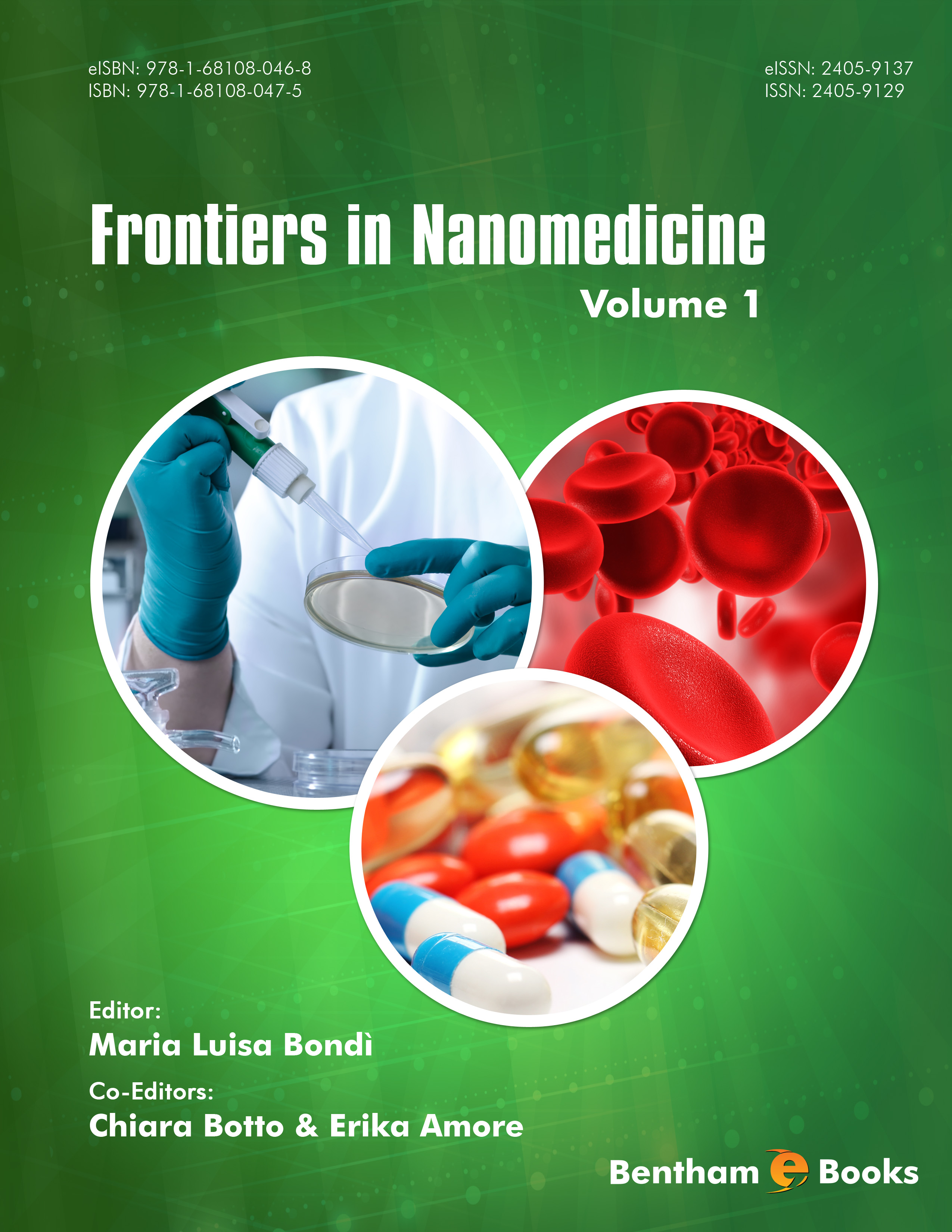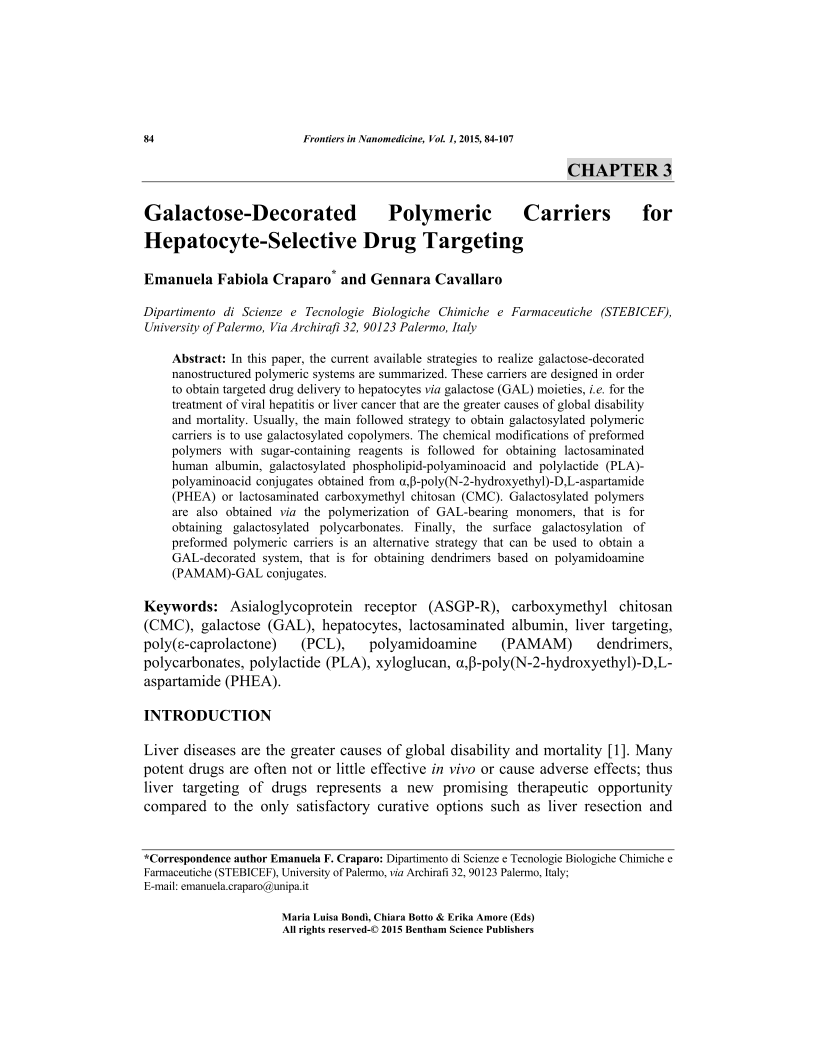Galactose-Decorated Polymeric Carriers for Hepatocyte-Selective Drug Targeting

- Authors: Emanuela Fabiola Craparo, Gennara Cavallaro2
-
View Affiliations Hide Affiliations2 Dipartimento di Scienze e Tecnologie Biologiche Chimiche e Farmaceutiche (STEBICEF), University of Palermo, via Archirafi 32, 90123 Palermo, Italy.
- Source: Frontiers in Nanomedicine , pp 84-107
- Publication Date: April 2015
- Language: English
Galactose-Decorated Polymeric Carriers for Hepatocyte-Selective Drug Targeting, Page 1 of 1
< Previous page | Next page > /docserver/preview/fulltext/9781681080468/chap-3-1.gif
In this paper, the current available strategies to realize galactose-decorated nanostructured polymeric systems are summarized. These carriers are designed in order to obtain targeted drug delivery to hepatocytes via galactose (GAL) moieties, i.e. for the treatment of viral hepatitis or liver cancer that are the greater causes of global disability and mortality. Usually, the main followed strategy to obtain galactosylated polymeric carriers is to use galactosylated copolymers. The chemical modifications of preformed polymers with sugar-containing reagents is followed for obtaining lactosaminated human albumin, galactosylated phospholipid-polyaminoacid and polylactide (PLA)- polyaminoacid conjugates obtained from α,β-poly(N-2-hydroxyethyl)-D,L-aspartamide (PHEA) or lactosaminated carboxymethyl chitosan (CMC). Galactosylated polymers are also obtained via the polymerization of GAL-bearing monomers, that is for obtaining galactosylated polycarbonates. Finally, the surface galactosylation of preformed polymeric carriers is an alternative strategy that can be used to obtain a GAL-decorated system, that is for obtaining dendrimers based on polyamidoamine (PAMAM)-GAL conjugates.
-
From This Site
/content/books/9781681080468.chap-3dcterms_subject,pub_keyword-contentType:Journal -contentType:Figure -contentType:Table -contentType:SupplementaryData105

